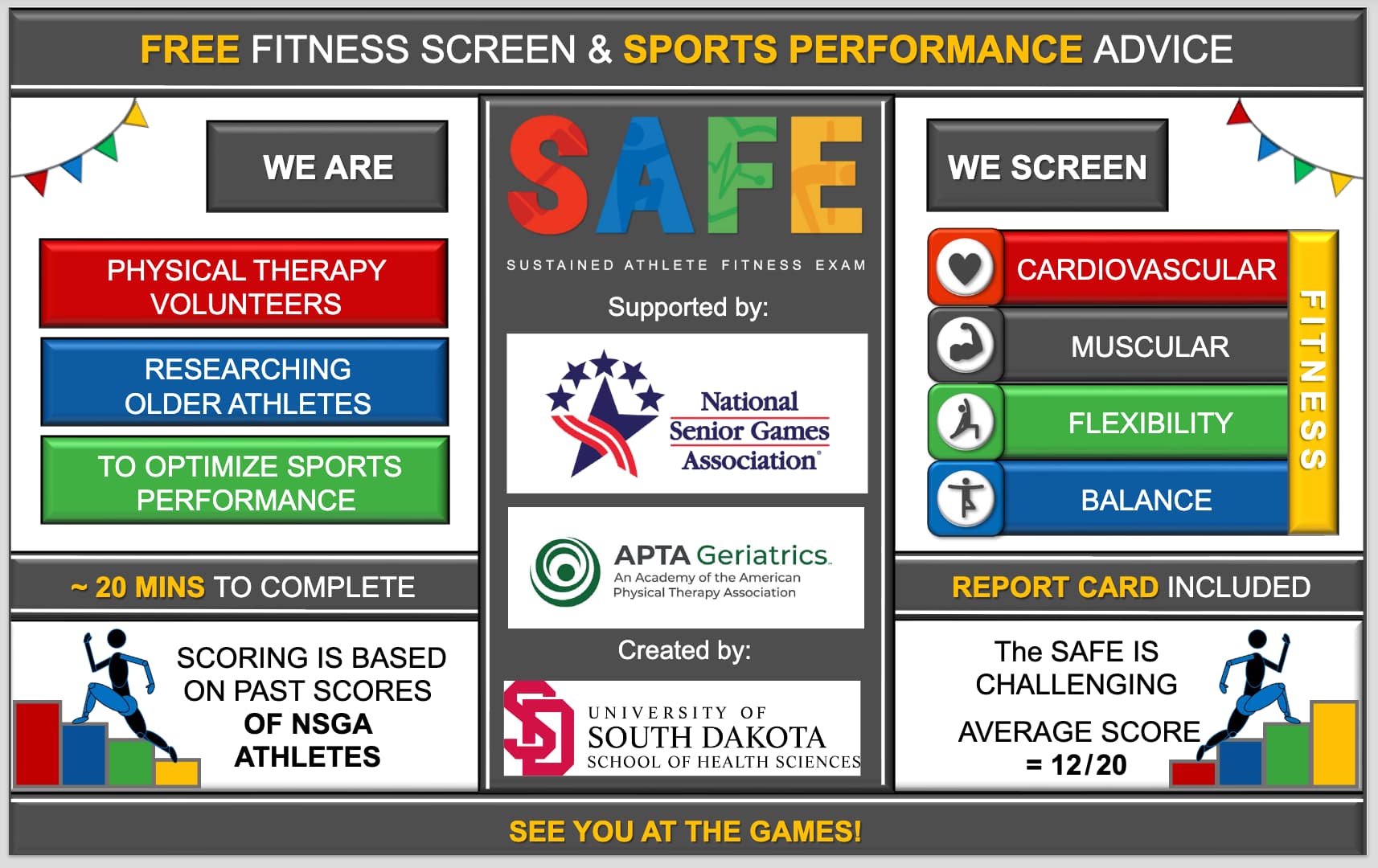Are you as fit as an 80-year-old elite athlete?
The answer might be a mortifying surprise.
In a recent study of 4,659 masters athletes who’d qualified for the National Senior Games (a competition that happens every other year and was once known as the Senior Olympics), most participants’ strength and aerobic conditioning were high and their overall health enviable. Few had experienced heart disease, cancer, high blood pressure, diabetes or other chronic conditions, and fewer than 10 percent had needed a joint replacement.
As a group, they “challenge conventions of age-related limitations,” the study concluded.
And now, you can see how you measure up: The study’s primary purpose was to detail new fitness tests specifically focused on competitive older athletes, ages 50 to 90-plus.
This work was needed because existing physical function tests for older people were too easy, said Becca D. Jordre, who led the study and is a professor of physical therapy at the University of South Dakota School of Health Sciences. Older athletes “aced them,” she said.
They needed their own fitness standards.
They have them now, thanks to what Jordre named the Sustained Athlete Fitness Exam, or SAFE, which the new study describes in depth. SAFE measures older athletes’ cardiovascular health, muscular strength and power, flexibility and balance to benchmark their fitness by age.
“The importance and increasing popularity of masters sports warrants a more granular understanding” of older athletes’ particular physiology and performance, said Alison Doherty, a professor of sport management at Western University in Ontario, Canada, who’s studied masters athletes but wasn’t involved in the SAFE research.
The new SAFE tests could be a useful yardstick for the rest of us, too.
But the full Sustained Athlete Fitness Exam is long and complicated. So, at The Washington Post’s request, Jordre and her colleagues chose the two most effective and simplest measurements from the full SAFE and calculated benchmarks for athletes and nonathletes.
Read the full article: These 2 quick tests can tell you if you’re as fit as an 80-year-old elite athlete (WaPo)
Related:
SAFE: Sustained Athlete Fitness Exam
Website: https://nsga.com/healthygames/
Research Paper:
The Sustained Athlete Fitness Exam—Outcomes of U.S. National Senior Games Athletes
Background/Objectives: Physical fitness screening measures for older athletes are lacking in clinical and research arenas. This study aims to define the Sustained Athlete Fitness Exam (SAFE), a comprehensive tool developed using age and sex-based normative data from U.S. National Senior Games athletes, and to investigate any SAFE differences by age, sex, sport, or exercise volume.
Methods: This cross-sectional study engaged 4,659 U.S. National Senior Games athletes (M age = 67.65, SD = 9.12, 59.1% female). Athletes completed health history questions and physical performance measures addressing cardiovascular, muscular, flexibility, and balance subscales. Scoring applied age and sex norms from the study population. Outcomes were compared by age group, sex, sport, and exercise volume.
Results: All 22 National Senior Games sports were represented in the study population. Health histories revealed low rates of chronic conditions, with 28.5% reporting none. Median weekly cardiovascular and resistance exercise volumes were 240 and 30 min, respectively. Of the 20 points possible on the SAFE, scores ranged from 2 (0.2%) to 20 (0.8%), with a median of 13. SAFE scoring demonstrated minimal differences by age group or sex and aligned predictably by sport. Higher exercise volumes were associated with superior SAFE composite scores, with nearly all subscales following this trend.
Conclusion: The SAFE and associated norms offer population-specific comparisons previously unavailable for older athletes, with a tool able to address multiple domains of physical fitness while avoiding ceiling and floor effects.
Significance/Implications: These findings provide the opportunity to improve assessment, treatment, preventative medicine, and training support for a growing demographic.
Paywalled paper: https://journals.humankinetics.com/view/journals/japa/aop/article-10.1123-japa.2024-0416/article-10.1123-japa.2024-0416.xml

